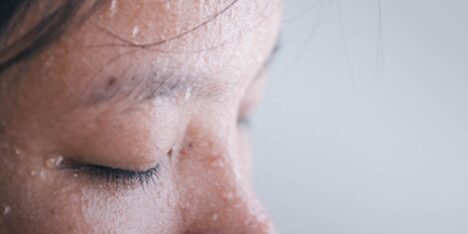Extremely Sweating (Hyperhydrosis / Hand-Face-Armpit) & Face Erythrosis (Blushing)
Is excessive sweating a disease?
From the brain, an excess of chemical discharges with an unknown mechanism, which stimulates the sweat glands, cause excessive sweating. Mostly, excessive sweating occurs without any reason when standing, hands-feet-head neck-face drips and/or sweats in a flowing style. Redness of the face may sometimes accompanies; blushing may also occur without perspiration.
Causes of excessive sweating?
Some diseases (cancer, diabetes, thyroid diseases, some psychiatric diseases, etc.) may cause sweating as a result. There is often no obvious reason. Sometimes excessive stress and anxiety trigger sweating. Excessive pain, spicy, onion and garlic can also cause excessive sweating.
Diagnosis?
The patient is diagnosed by physical examination and listening to his complaints. Patients with excessive sweating should firstly be examined for endocrinology, psychiatry and dermatology examinations and to see if there is any other disease. If these treatment options do not provide adequate control, the surgical treatment option should be explained to the patient in detail. The patient should not be in a hurry to make a decision.
Treatment options?
Although botox, some herbal treatment options, acupuncture, meditation and hypnotherapy have been defined and applied, the success of non-surgical treatment options is low or short duration. As a solution to excessive perspiration, the success rate of many products sold and offered in the market is low, temporary or absent, while the side effects are also very high. Never take a product without consulting a doctor.
Surgical solution is available for excessive sweating. Success rate is very high (*90% of patients with ETS sympathectomy with clip) and this effect is permanent; one study reported no perspiration in more than 60% of patients even after 12 years.
ETS Sympathectomy with clip?
It is a closed operation and it is performed on both sides in the same session. By entering through the 2 small holes under the armpit, a clip is placed on the sympathetic nerve that enters the sweating zone. In this way, chemical discharge from the brain cannot reach the sweat glands and sweating is prevented. As side effects, sweating is present in another body region (80% of patients are mild/moderate and 3-5% of patients have severe sweating). This is called “reactive sweating”. This should either be controlled medically with medication – or again with a closed nerve anastomosis surgery providing significant relief in 75% of the patients.







